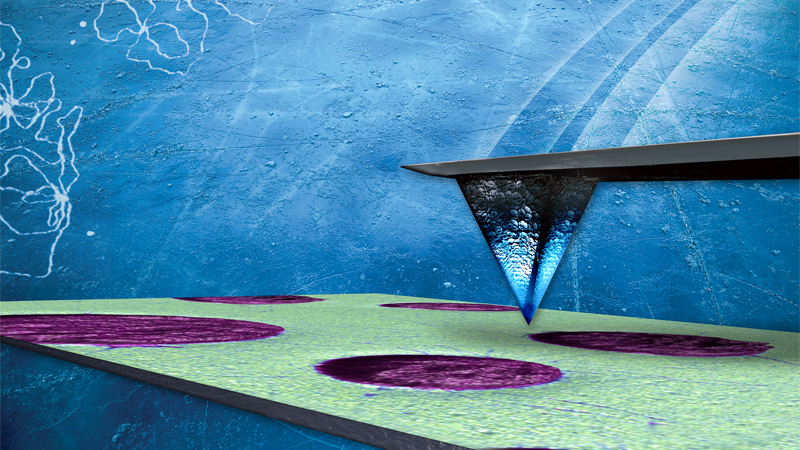PeakForce Electric Force Microscopy (PeakForce EFM)
In PeakForce EFM, the capabilities of EFM and PeakForce QNM are combined. PeakForce EFM provides simultaneous acquisition of topography, electric field distribution, and mechanical properties, such as adhesion, modulus, and deformation.
Similar to EFM, PeakForce EFM uses a two‑pass approach. In a first pass (main scan) topography is acquired, while in the second pass (LiftMode scan), cantilever oscillation amplitude and phase are acquired, representing the electric field variations in the sample. However, in PeakForce EFM, the TappingMode topography scan is replaced with a PeakForce Tapping scan, providing simultaneous extraction of mechanical properties (i.e., modulus, adhesion, dissipation, indentation). This approach also allows the use of cantilevers with lower spring constant, which results in lower force regimes and enhanced electric field detection sensitivity (scaling with Q/k).
Imaging of electric fields and charges with PeakForce EFM can be of interest for semiconductors, 2D materials, photovoltaics, perovskites, and general nanoelectrical materials. PeakForce EFM can be preferred over conventional EFM when there is an interest in correlating mechanical properties to electric properties, or when a higher sensitivity or higher spatial resolution is required.
